Vietnamese conical hat is a special part in the country's traditional culture with its practical use and amazing story behind, which are revealed in this article.
When visiting Vietnam, especially in the wet market or rural areas, it is easy to catch sight of Vietnamese women (usually senior to old age) wearing a hat in conical shape instead of the normal caps or headwear you usually know. That’s ‘Non la’, now popularly known as the Vietnamese conical hat.
Not just a daily accessory, Vietnamese conical hat became one of the beautiful cultural symbols of Vietnam. Why is it said so? Let's read the article to get the answer.
1. The legend behind Vietnamese Conical Hat
Non la hat truly flourished in rural settings without a doubt. The legend was intertwined with the culture of growing wet rice in Vietnam. Long ago, a graceful deity came down from the heavens to shield human beings from a severe flood. She wore an enchanting hat crafted from four circular leaves intertwined with bamboo rods.
With a massive size, the hat could protect the world from harsh weather and restore normalcy to people's lives. Moreover, this celestial superwoman instructed individuals on cultivating vegetables and trees for sustenance. After that, she quietly walked away and made her way back to heaven. She was celebrated as the Goddess who protected against the rain. The locals attempted to replicate the hat worn by the Goddess to shield themselves from the sun and rain.
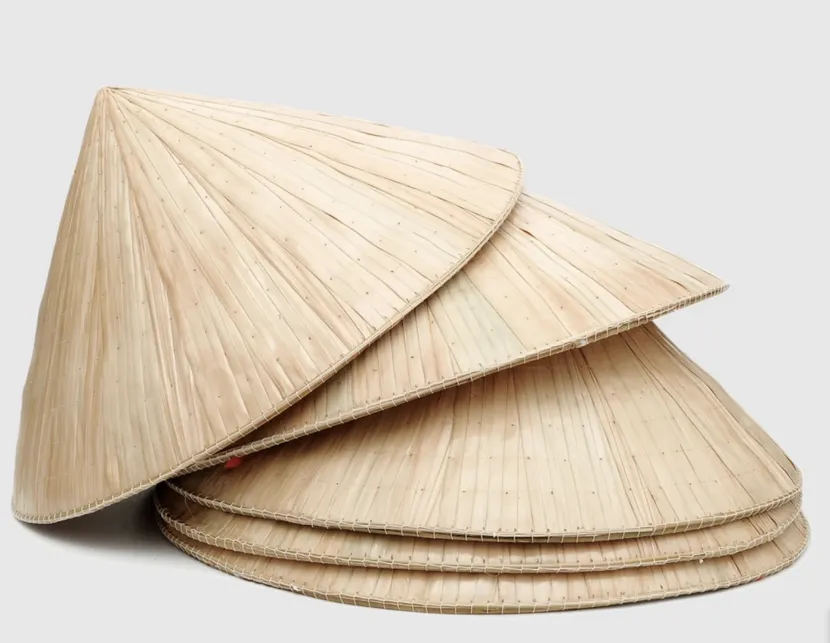
So, they ventured into the forest to gather natural materials like palm leaves, Moc tree bark, and bamboo to craft the hat as it is recognized today.
That's the legend but the true origin of the Vietnamese hat is still a mystery. However, this hat has certainly been a crucial accessory for Vietnamese farmers for over a millennium. Historians have discovered images of these hats on ancient artifacts such as the Ngoc Lu kettledrum and Ao Thinh bronze jar 2,500 to 3000 years ago.
2. The usage of Vietnamese Conical Hat
2.1. In normal life
The conical hat may be utilized for a variety of purposes in Vietnam. In the same way that you would wear any other hat, you put this one on to protect your head from the intense rays of the sun. On the other hand, because the conical hat is coated with a layer of water-proofed vanish, it may also serve as a miniature umbrella, protecting you from the rain. The Vietnamese conical hat is predominantly worn by women, but it comes in various styles and designs. Men's conical hats feature a taller cone and a smaller brim compared to those designed for women. In the past, various designs were created for farmers, the upper class, religious monks, army troops, adults, or children.

A Vietnamese conical hat also gives you the opportunity to be creative. Inverted, the conical hat transforms into a handy basket for stowing away market commodities. Wearing a conical hat allows the sweat to evaporate and cool your head, which is a great way to beat the heat on hot summer days. Moreover, it can be your handy fan anytime you wish for. The most common kind of Vietnamese headwear, especially among farmers and street sellers, is the simple conical hat due to its low cost, adaptability, and mobility.
2.2. In art and performance
Vietnam also has its own fashionable conical hats. Although they are more prevalent in rural areas than in urban ones, you can still see plenty of young ladies wearing "ao dai" and "ao ba ba" with these conical-shaped hats during festivals. These traditional Vietnamese customs are elevated with the help of the conical hat, which is both simple and elegant. Nowadays, Vietnam pride on the conical hat was spread all over the world with its presence in many fashion shows of both Vietnam and international designers.
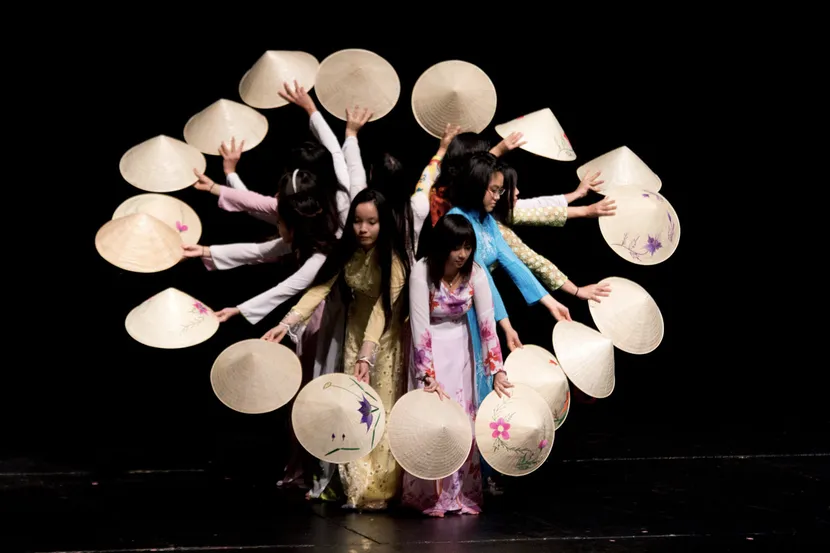
In many traditional festivals or ceremonies, the young Vietnamese dancers wear Ao dai and conical hats. These performances are assumed to represent cultural characteristics and have become one of the most inevitable performances of traditional events. As the dancers gracefully flow to the rhythm, the audience is lulled into a state of peaceful relaxation. As a whole, the dance is a fantastic depiction and emblem of Vietnamese culture, traditional dress, and any art program's essential performance component. Wearing a conical hat with Ao dai now sets Vietnam apart from other countries in cultural celebrations and international fashion contests.
In Hue, the poetic capital of Vietnam, people wear conical hats adorned with poems instead of just plain original leaves that have nothing on them. They are frequently given out as mementos to both locals and tourists. A lovely keepsake or gift for poetry enthusiasts, "Non bai tho" might also bring back fond memories of times gone by.
3. Making Vietnamese Conical Hat
3.1. Materials
Traditional Vietnamese hats are typically crafted from low-cost, naturally resistant materials like bamboo, leaves from palm or bamboo trees, or the bark of Moc trees. The Vietnamese conical hat is essentially watertight since it has a bamboo body and is woven with dried leaves. This traditional headwear often features a ribbon made of rattan, cotton, or silk. The ribbons might be a vibrant shade of color if they are worn at ceremonial events.
3.2. How to make a Vietnamese Conical Hat?
Despite its apparent simplicity, the Non la Vietnam requires a lengthy process.
The process begins with sun-dried leaves that are soaked in water for three hours before being left out overnight to get a beautiful white color. To give the leaves a new appearance and make them smoother and finer, they are heated and ironed.
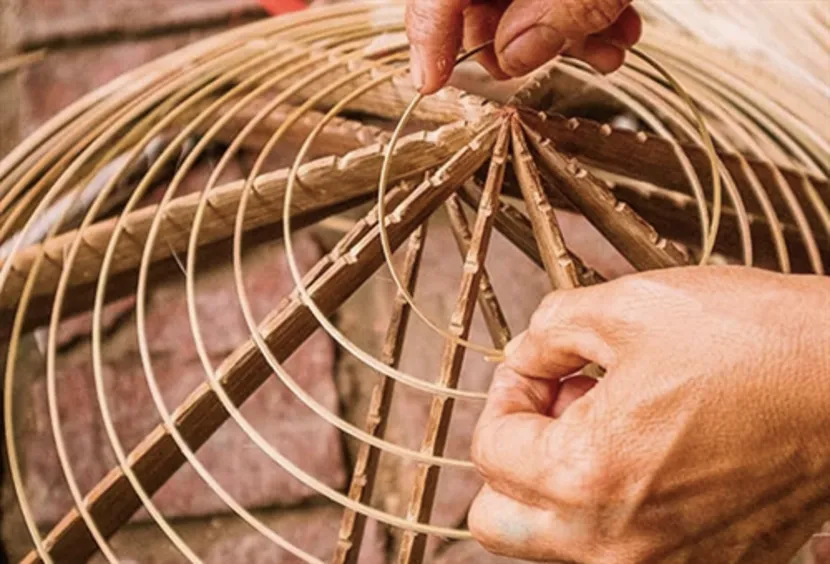
The next step is to construct the hat's main body using bamboo strips that are knotted together. Two layers of leaves are intersewn with a fine plastic thread to form the covering.
More than that, the bottom of the hat has two dangling fringes that may be sewn into place, allowing the wearer to tie a silk ribbon as a chin strap.
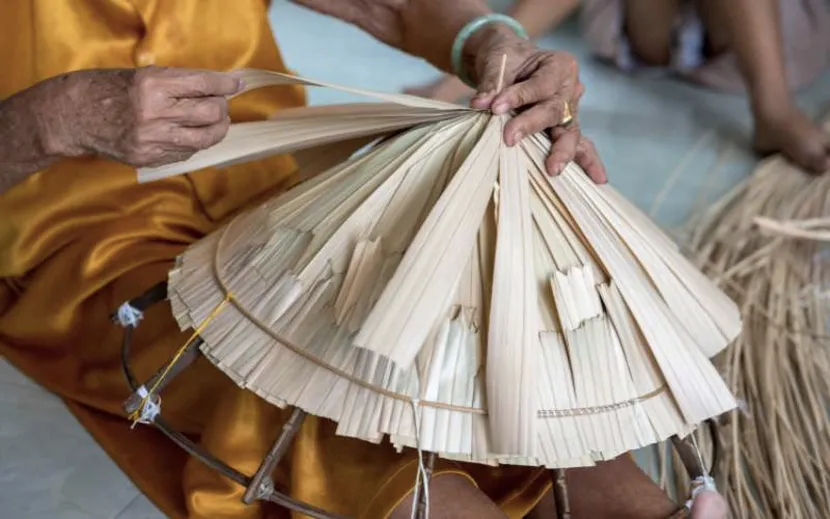
The final step in making a Vietnamese conical hat waterproof and long-lasting is applying a thin coating of varnish made of turpentine and alcohol.
3.3. Where to watch the process and buy souvenirs?
Due to its popularity, there are so many places you can buy Vietnamese non la hats. However, if you love to visit the craft village to witness the process and also explore the local life, I recommend these 2 places. Non La from Chuong Village (30 km southwest of Hanoi) and Non Bai Tho (poetry conical hat) from Hue, the old imperial capital of Vietnam, are the two most well-known traditional conical hat styles in Vietnam.
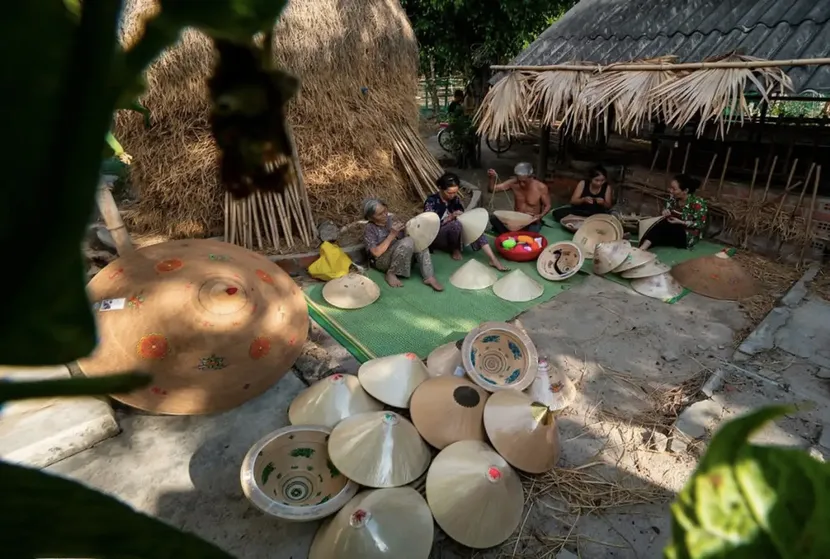
For more than 300 years, Chuong Village has been known for its excellent reputation. More than their aesthetic value, the conical hats made in this town are known for their durability. Crafts artisans in the area are plentiful, so this village is able to make hundreds of conical hats every day for domestic use and international export as well. In the village, a hat will cost you from 20,000 VND to 100,000 VND, while in Hanoi's souvenir stores, you may pay for a conical hat up to 1,000,000 dong, depending on the quality.
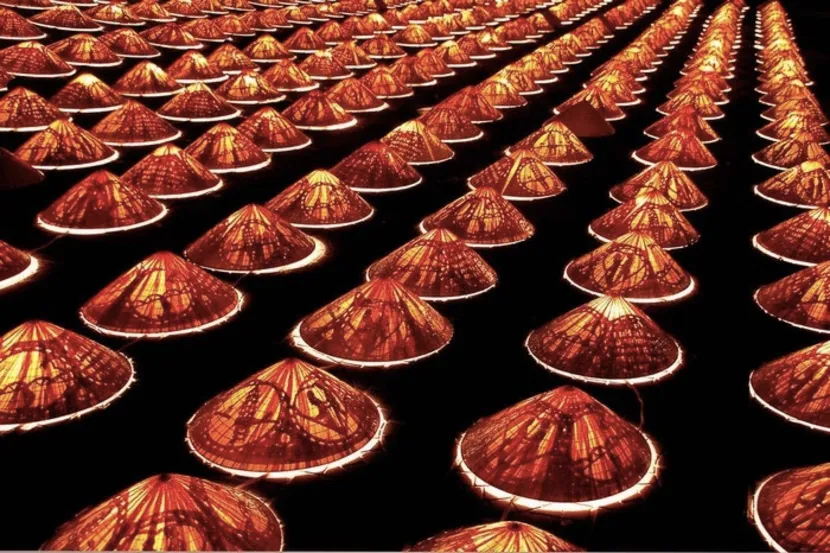
Several well-known villages in Hue, including Ho Tay, Da Le, Phu Cam, Doc So, Trieu Tay, Kim Long, and many more, have contributed to the centuries-long tradition of poetic conical hat creation. Stunning images of local scenery, such as the Perfume River or Ngu Mountain, or well-known poetry linked to Hue, are expertly interwoven between two layers of woven leaves. Sunlight is the only way to expose these designs on the hat.
The Vietnamese conical hat has been a cultural symbol for many years. Visit Vietnam to explore our beautiful culture and have amazing memorable moments.
We hope this information has answered your questions. Should you need any further assistance, feel free to email us at [email protected].
See more articles about Vietnam:
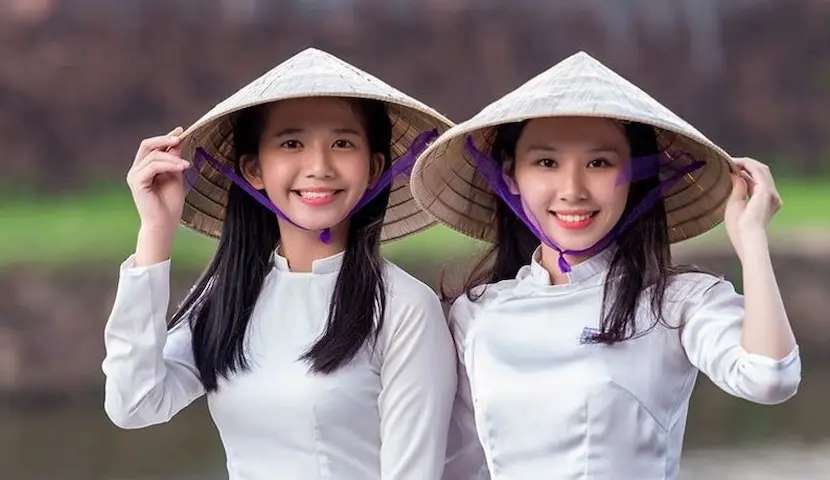










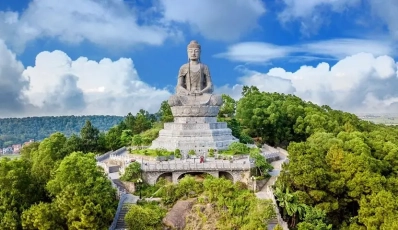

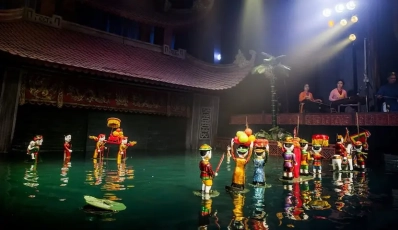

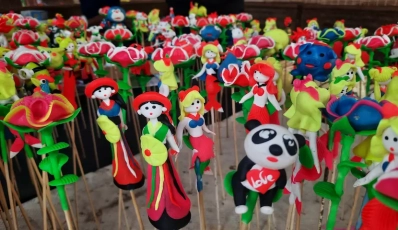
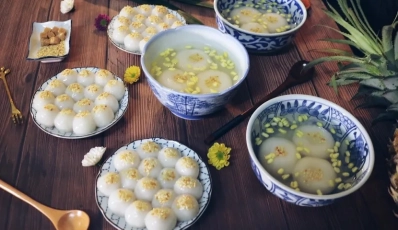




 TRAVELERS' CHOICE 2025
TRAVELERS' CHOICE 2025 


